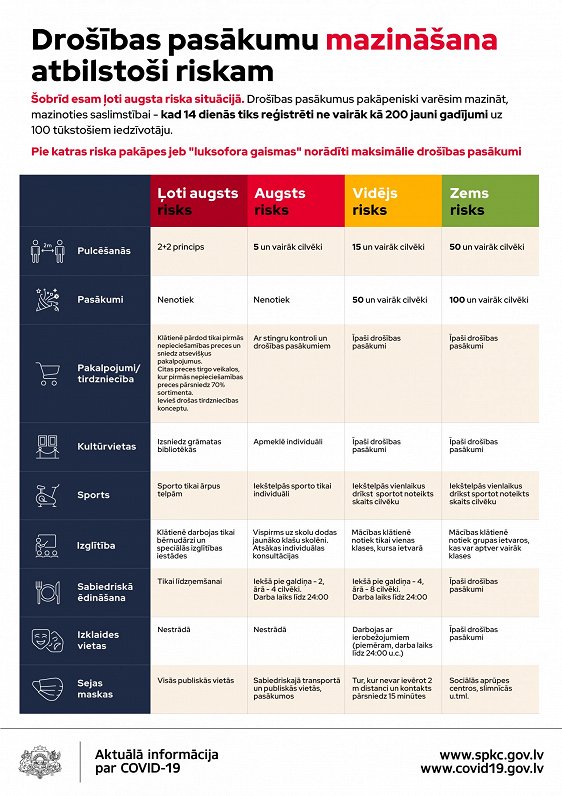However, while most traffic lights have three lights, this version will have four.
The traffic light principle consists of four levels of risk:
- Dark red light - a very high risk situation (like the one in which we find ourselves are currently), with more than 200 new cases of Covid-19 per 100,000 population registered iover the previous 14 days;
- Red light - a high-risk situation in which no more than 200 new cases per 100,000 inhabitants over 14 days are recorded. This is the point at which the government says easing of restrictions can be considered.
- Yellow light - a medium-risk situation in which no more than 100 new cases per 100,000 inhabitants over 14 days are recorded.
- Green light - a low-risk situation in which no more than 20 new cases per 100 000 inhabitants over 14 days are recorded.
In Latvia, the 14-day cumulative morbidity rate is currently 560.4 cases per 100,000 population. Under this model, the degree of risk will have a direct bearing on which precautionary measures will be in place and whether they are heading for further tightening or relaxation. For example, in a red-light situation, five and possibly more people will be able to gather, but public events will still be banned. Events could resume if morbidity decreases to te medium rank.
Introducing the system to journalists via videolink, Pavļuts said the system was the result of officials and experts trying to work out how best to communicate the current situation and the direction of the pandemic to the public.
He underlined that the 200 cases per 100,000 population was the key figure. Below that and it would be possible to consider relaxing some restrictions, though this was not an automatic trigger.
"Unfortunately we are in the dark red zone, the high risk zone and the situation in Latvia is, unfortunately, very serious," Pavļuts said. "We must acknowledge that it is also possible for the situation to get even worse," he warned, explaining that in such circumstances current restrictions could get even tougher.






























